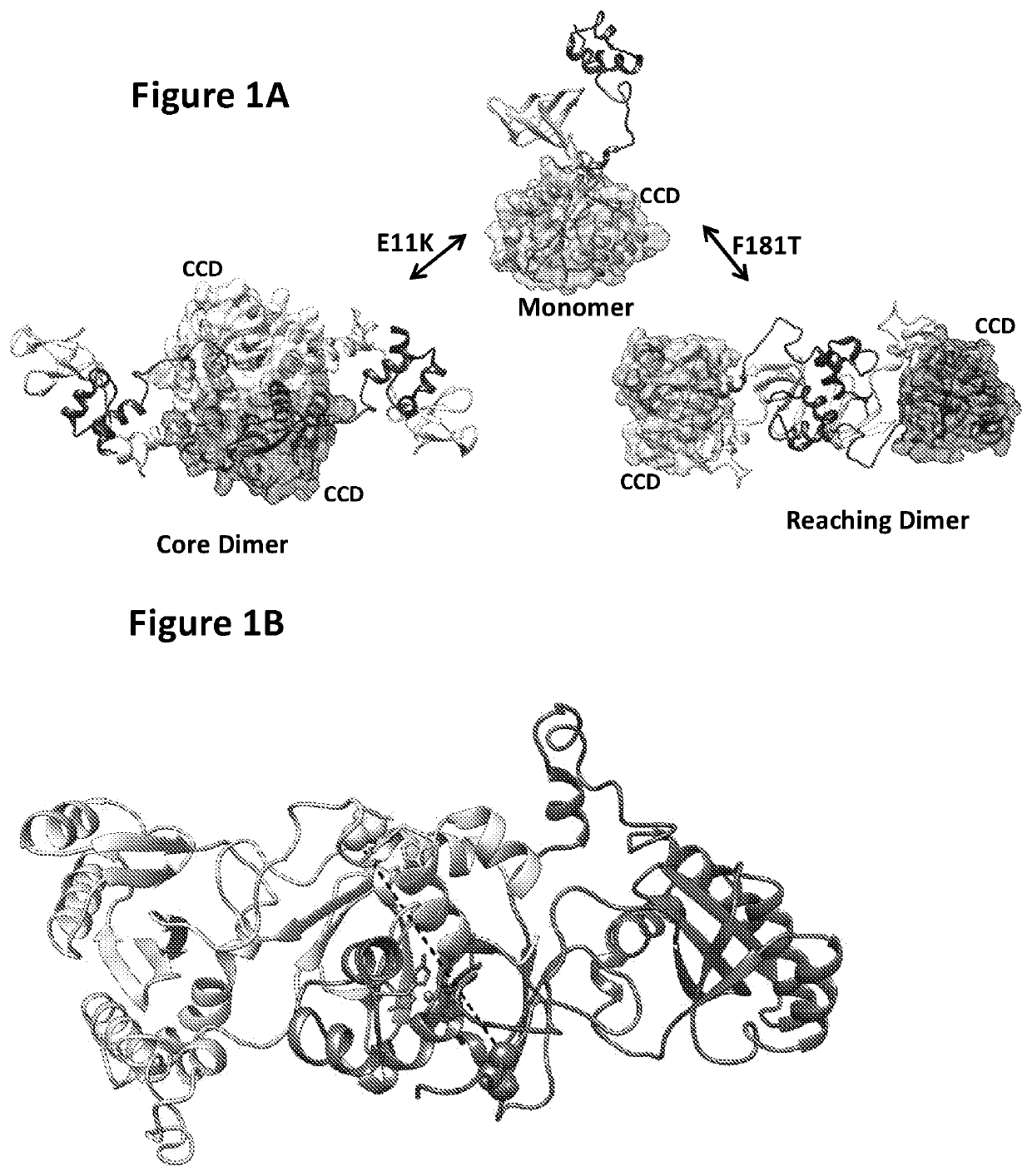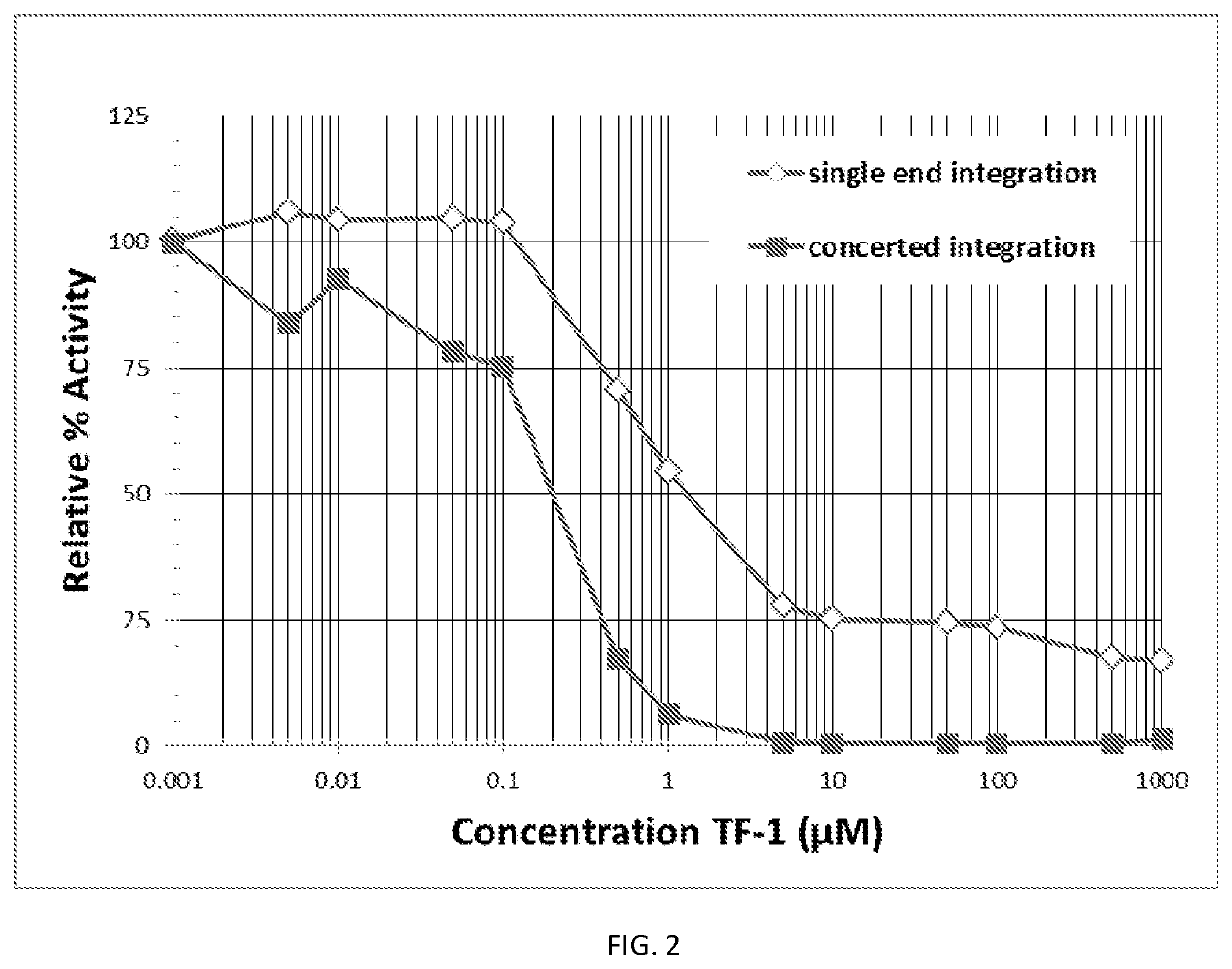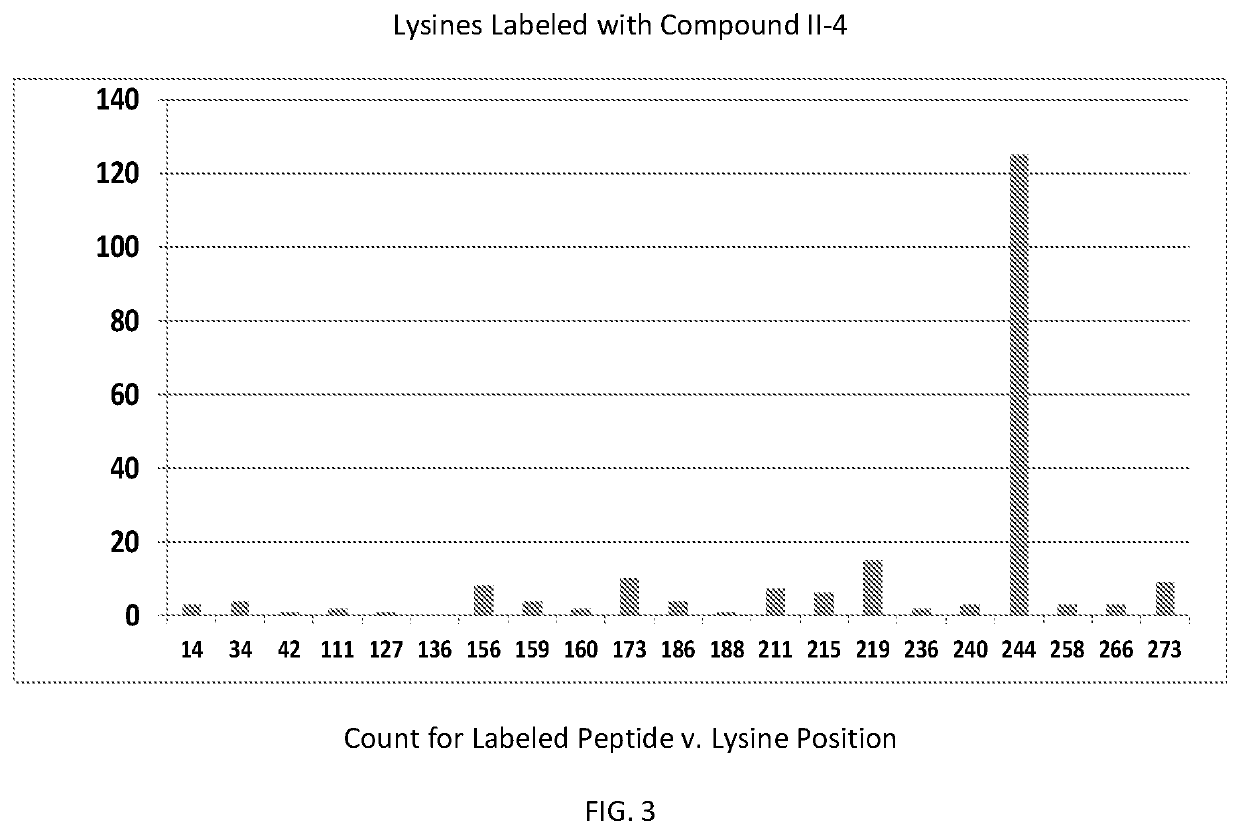Inhibitors of hiv-1 integrase multimerization
- Summary
- Abstract
- Description
- Claims
- Application Information
AI Technical Summary
Benefits of technology
Problems solved by technology
Method used
Image
Examples
example 1
Determination of Inhibitor IC50
[0078]FIG. 2 shows the inhibition curve for the inhibitor I-1 (TF1). To determine the IC50 for each of the validated compounds, the catalytic assay was performed as described above, and both single end (open diamonds) and concerted integration (closed squares) products were quantitated, and the relative percent activity was plotted as a function of the inhibitor concentration. The data in Tables 3 and 4 supports FIG. 2.
TABLE 3I.I.AVG POSI.I.(K Counts) -I.I. cnts -Rel %(K Counts)BlankBLActivity5.4690138.397132.928140.069134.6136.285100146.797141.328142.49137.021100.540149.683144.214105.818147.859142.39104.479148.233142.764104.754146.91141.441103.783101.88996.4270.74979.72274.25354.48343.26537.79627.73339.79434.32525.18638.84233.37324.48837.58132.11223.56229.44423.97517.59228.52323.05416.916
TABLE 4I.I. (KI.I. (KI.I. (KCounts)-AVG POSRel %Counts)NameuMFormCounts)BlankI.I. cnts-BLActivityCI / SIBlank0F37.5150POS-10F3204.711197.196POS-20F3188.627181.112183.76...
example 2
Labeling Binding Site
[0079]In order to determine which amino acid residues in integrase are proximal to the binding site for formula II class compounds, we took advantage of the N-succinimidyl group on the compound shown in formula II-4, which selectively forms a covalent bond with the primary amine in lysine side chains. Wildtype Integrase at 20 μM concentration was incubated with the 11-4 compound at a molar ratio of 1:1 (compound II-4:IN monomer) for 2 hours, after which labeled protein was quenched and separated from unbound compound by gel filtration. Labeled samples were then run on BisTris gradient SDS gels with antioxidants included, which were then stained and Integrase bands were sent for trypsinolysis and MS / MS detection of lysine containing peptides that had the expected mass gain for covalent compound binding. Peptide fragmentation analyses (y and b series ions) were also performed to determine which particular lysine was covalently modified.
[0080]FIG. 3 shows that the ...
example 3
Inhibition Effects
[0081]Compounds were tested for inhibition of infectivity by treating target cells at the time of infection. Envelope pseudotyped virus particles were produced by transfection of 293T cells with a 4-plasmid system that generates virus capable of only a single round integration of a GFP reporter genome (Zufferey, R., et al. Self-inactivating lentivirus vector for safe and efficient in vivo gene delivery. J. Virol. 72, 9873-80 (1998)). Virus particles were isolated from filtered supernatants and used to infect HeLa cells that were incubated in the presence of the inhibitor compound for 1 hour prior to infection. Successful viral integration was scored as percent GFP positive cells at 48 hours post-infection. This assay was designed to test the inhibition of early steps in the retroviral life cycle up to and including integration of the provirus. These experiments were performed for a representative compound from each class I and II. Table 5 shows TF-1 inhibition of i...
PUM
| Property | Measurement | Unit |
|---|---|---|
| carbon number | aaaaa | aaaaa |
| concentration | aaaaa | aaaaa |
| temperature | aaaaa | aaaaa |
Abstract
Description
Claims
Application Information
 Login to View More
Login to View More - R&D
- Intellectual Property
- Life Sciences
- Materials
- Tech Scout
- Unparalleled Data Quality
- Higher Quality Content
- 60% Fewer Hallucinations
Browse by: Latest US Patents, China's latest patents, Technical Efficacy Thesaurus, Application Domain, Technology Topic, Popular Technical Reports.
© 2025 PatSnap. All rights reserved.Legal|Privacy policy|Modern Slavery Act Transparency Statement|Sitemap|About US| Contact US: help@patsnap.com



